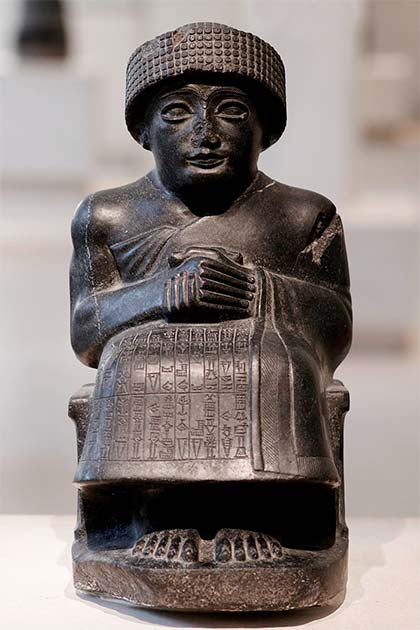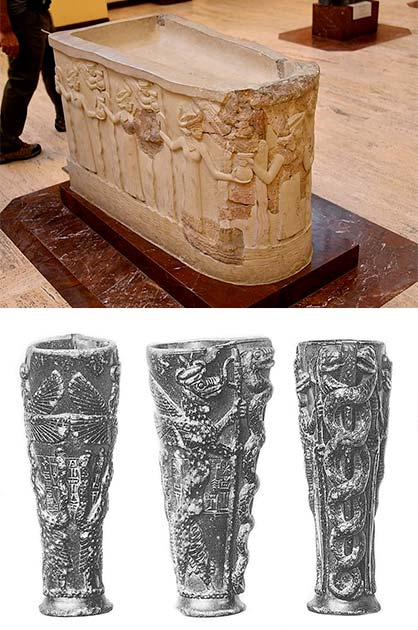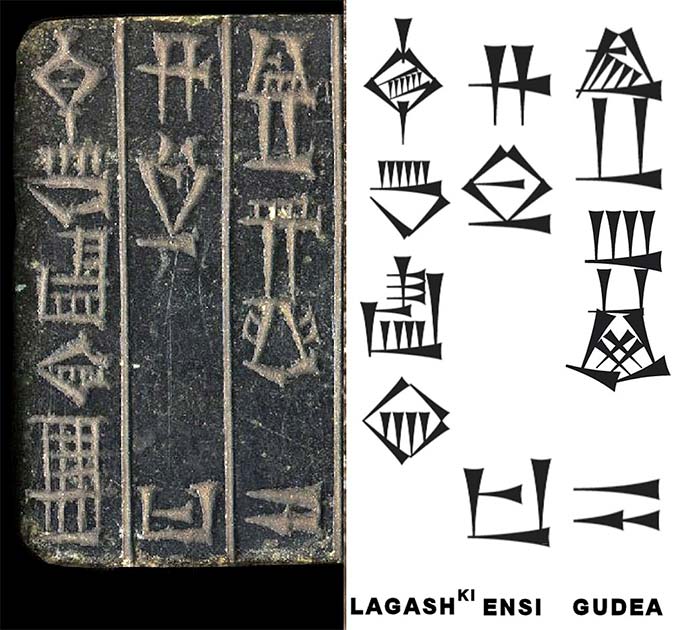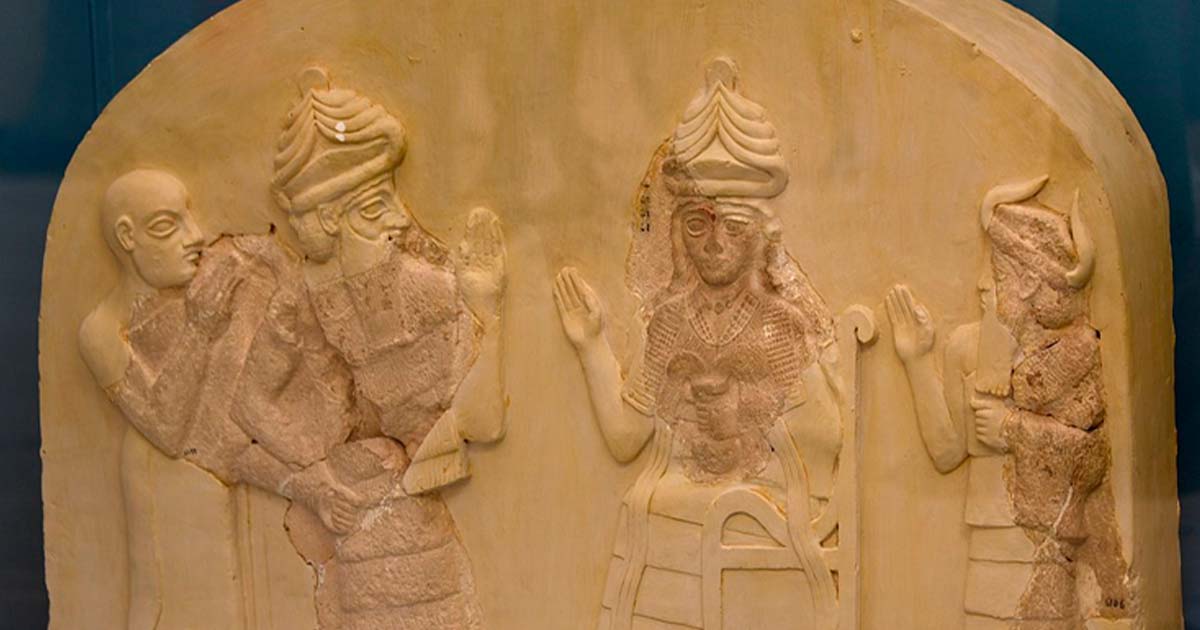The Rule of Ensi Gudea and the Golden Age of Lagash
Ancient Mesopotamia, called by many the “cradle of civilization”, is in many ways enigmatic and mysterious. There is plenty about it that we are still to uncover, as it reaches so far back in time. Either way, several prominent rulers of its city-states are well known to historians. Gudea, the ensi (ruler) of Lagash is amongst the best known. Numerous writings mentioning him survived the passing millenia, as did elaborate statues erected in his honor. Who was this enigmatic ruler, and how did his reign benefit the ancient and powerful city-state of Lagash? Let’s find out.
Gudea and the Golden Age of Lagash
Gudea, known as Ensi Gudea of Lagash, was a prominent ruler of the ancient city-state of Lagash, located in present-day southern Iraq. He reigned during the 3rd millennium BC, specifically from around 2144 to 2124 BC, during the period known as the Sumerian Renaissance. He came to the throne, chronologically, after the ruler Ur-Baba, and before Ur-Ningirsu. During this time, Lagash was one of the major city-states in Mesopotamia. The entire region was dotted with semi-independent city-states, many of which were the first major metropolises in the entire world. And ruling one such city-state required a man of skill, cunning, and power. Gudea was exactly such a person.
It is not exactly known how Gudea came to the throne of Lagash. It is presumed that he was not born in that city, but rather came to it by marriage. It is supposed that he married Ninalla, the daughter of Lagash’s King, Ur-Baba. Furthermore, he is believed to have come from a wealthy and influential regional family, and was possibly even related to the previous dynastic rulers of Lagash. Still, his marriage to the king’s daughter gains him definitive entrance into the royal house of Lagash. It is likely that King Ur-Baba had no sons to inherit the throne, and thus Gudea was the next in line, through marriage.

Statue of Gudea, 2120 BC. (Public Domain)
Gudea's reign is known for its relative peace and prosperity. During this time, central Sumer was ruled by the relatively “alien” Gutian Dynasty. But even so, Gudea maintained a degree of independence, and he focused on internal development, infrastructure projects, and enhancing the religious and cultural aspects of Lagash, rather than engaging in military conquests. Under his rule, Lagash experienced a period of economic growth and cultural resurgence. Surviving inscriptions speak of his creation of new irrigation channels, creation of new buildings and temples, and greatly improved international trade relations.
- 4,000-Year-Old Lost Mesopotamian City Discovered in Iraq
- The Babylonian map of the world sheds light on ancient perspectives
An Ancient City-State Renaissance
Gudea was a great patron of the arts and is particularly famous for commissioning numerous statues and architectural projects. These artworks usually depicted Gudea himself, as well as various deities and religious scenes. The statues of Gudea, often seated with hands clasped in a gesture of prayer, are some of the most recognizable artworks from ancient Mesopotamia. They present an incredible degree of craftsmanship and skill, especially for such a distant era of history. Some of the most important art pieces made during his time are the diorite statue of Gudea; the "Libation vase of Gudea"; Gudea terracotta cylinders; the Ningirsu sacred basin; and many more.

Top: Sacred basin, a gift from Gudea, ruler of Lagash, to the temple of Ningirsu. The basin was inside the temple and might well have contained scared water for ritual purposes. 2144-2122 BC. Ancient Orient Museum, Istanbul. ( Osama Shukir Muhammed Amin FRCP (Glasg)/CC BY-SA 4.0), Bottom: The Libation vase of Gudea dedicated to god Ningishzida. Inscription reads. "To the god Ningiszida, his god, Gudea, Ensi (governor) of Lagash, for the prolongation of his life, has dedicated this" (Public Domain)
Gudea's statues and architectural structures often contained inscriptions that provided information about his reign and achievements. These inscriptions described his devotion to the gods, his building projects, and his efforts to promote prosperity and justice within Lagash. They also highlighted his piety and his close relationship with the deities. Because of these reasons, surviving inscriptions and art pieces were very important to historians, who were able to learn a bit more about this period in Sumerian history.
One of Gudea's major undertakings was the construction and renovation of several temples in Lagash. The most famous of these was the temple of Ningirsu, the city's patron deity. Gudea sought to glorify the gods and strengthen their worship by building impressive structures dedicated to their religious cults. Of course, through this, he wanted to get on the good side of the common folk, who were highly devoted to Ningirsu and other gods.
A King Protecting His City
Gudea's reign is well-documented through numerous cuneiform tablets discovered in archaeological excavations. These tablets contain administrative records, legal texts, letters, and other writings, providing valuable insights into the political, economic, and social aspects of Lagash during Gudea's rule.

"Gudea, Governor of Lagash", in an inscription. (The Walters Art Museum/CC0)
Throughout his reign, he maintained diplomatic relations with other city-states and regions. He exchanged gifts and letters with rulers of neighboring cities, demonstrating his desire for peaceful coexistence and cooperation. During his reign, Lagash engaged in trade with the Indus Valley civilizations, for the first time in history.
For the duration of his reign, Lagash enjoyed a period of prosperity and a small golden age. The city did not wage war at that time, and the only military exploit seems to have occurred in the sixth year of his reign, against the Elamite city of Anshan.
- Oneiromancy: Dream Predictions in Ancient Mesopotamia
- 4,000-Year-Old Mesopotamian City Discovered In the Shadow of Ur
After Gudea's death, however, Lagash's power declined, and the city was eventually absorbed by the Third Dynasty of Ur. However, Gudea's legacy endured through his architectural achievements and the preservation of his inscriptions on statues and tablets, which allowed later generations to learn about his rule and the culture of ancient Sumer.
It's important to note that while significant information about Gudea and his reign has been discovered, there are still gaps in our knowledge, and some details may be subject to interpretation or further research.
Top image: Votive stele of Gudea, ruler of Lagash, to the temple of Ningirsu. Ancient Orient Museum, Istanbul. Source: Osama Shukir Muhammed Amin FRCP (Glasg)/CC BY-SA 4.0)
References
Edzard, D. O. 1997. Gudea and His Dynasty. University of Toronto Press.
Prentice, R. 2010. The exchange of goods and services in pre-Sargonic Lagash. Ugarit-Verlag.
Vaughn, C. E. 1974. Lagash. Iraq, vol. 36.

















